Stalking Australia’s Real Life Post-Apocalyptic Nuclear Wasteland
It’s the morning of March 24, 2015, and I’m about to break the single rule of entering a former nuclear test site: Do not eat or drink anything. We’re at a place known as Emu Fields—Ground Zero—in a remote area of the Australian Outback called the Woomera Prohibited Area. As we pass the first of a pair of obelisks that mark Operation Totem, where, in 1953, the British Army tested atomic bombs, I lift my respirator to take a small sip of water. Wayne, my traveling companion, shoots me a concerned look. But it’s too late: I’m already drinking. Gulp.
Nine days earlier, Wayne and I meet for the first time in a hotel lobby in Darwin. He’s flown in from California and I’ve come up from Melbourne, where I live. We’re rendezvousing here, in this swampy city on the northern coast, to start an epic road trip that will lead us into the scarred heart of the country.
Friends via the Internet for several years, Wayne and I began discussing this trip last year. We’re members of the Institute for Atemporal Studies, a modern and peculiar breed of adventurers, part of “some weird 20th century remix of the 19th century epistolary networks of natural historians and explorers,” as another group member describes it. Comic books like Warren Ellis’ Planetary greatly inspire us. We want to blend fiction with reality, to see all the strange places of the world and report back.

As an American, Wayne’s vision of Australia was shaped by watching the Mad Max movies as a boy. As for me, I’ve developed an ever-growing interest in works about “Zones of Alienation” (places where reality begins to break down). Books like Roadside Picnic, written by the Strugatsky brothers, about the aftermath of an extra-terrestrial event. The brothers prophesized places like the Chernobyl Exclusion Zone and give a name to the people that explore the forbidden lands: Stalkers.
The focus of our trip is just such a journey into a genuine nuclear wasteland. We refer to our coming adventure into the Woomera Prohibited Area as a trip into “the Zone.” We kit ourselves out as if we were a Stalker in Chernobyl: a mix of mostly cosmetic military-surplus gear and some crucial protective equipment. It is fitting that the expedition will be mounted from Coober Pedy, where parts of George Miller’s Mad Max: Beyond Thunderdome were filmed. It’s the perfect place from which to embark on expedition into a real life post-apocalyptic landscape.
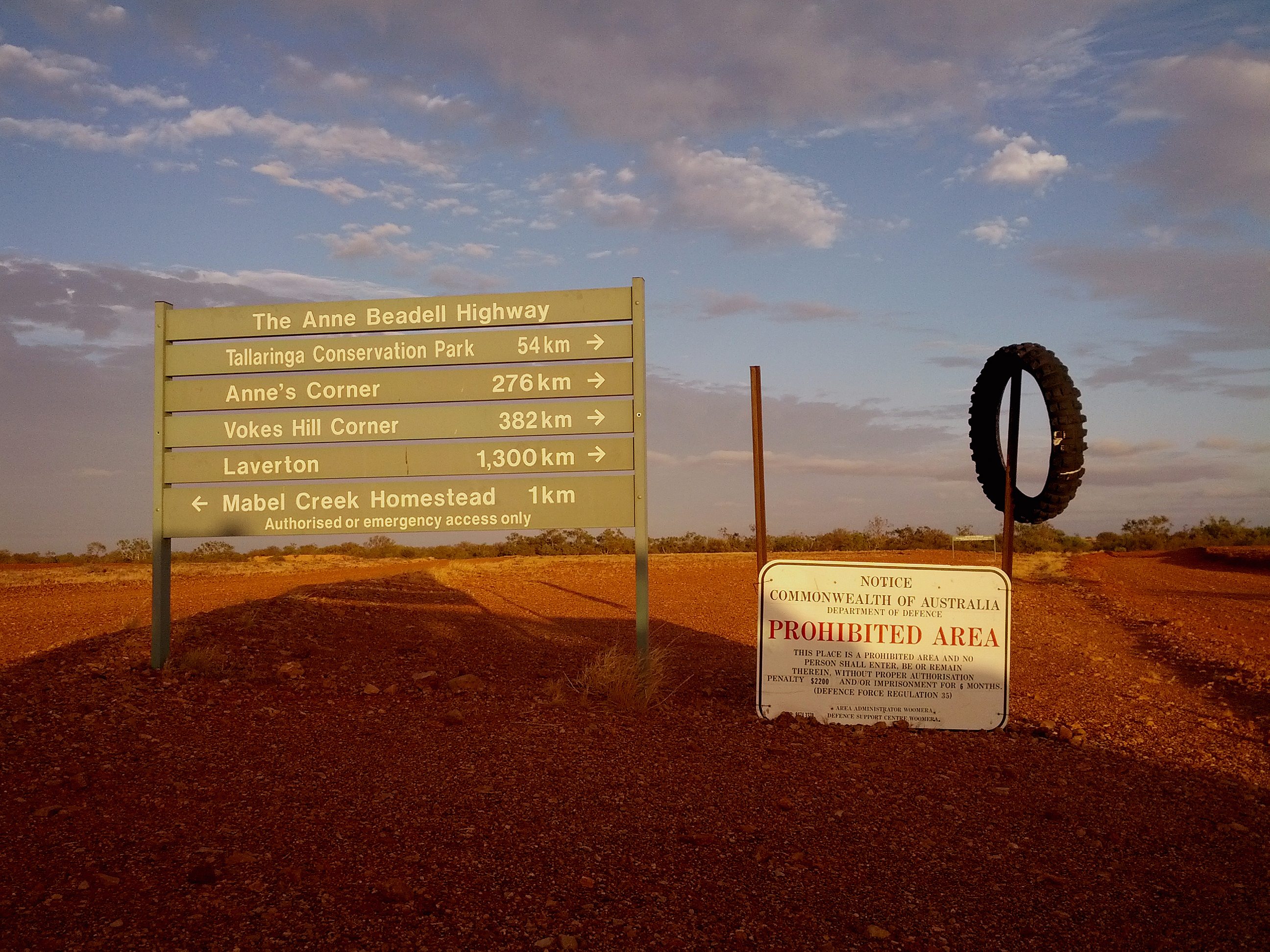
The trip begins with the surreal imagery we’d hoped for. Making our way south from Darwin, we see strangely adorned termite mounds and walk among the granite boulders known as the Devil’s Marbles. We see the 4,700-year-old meteorite craters that served as one of the Apollo astronauts’ training grounds. We spend a night at Wycliffe Well, “Australia’s UFO hot spot,” and are greeted at breakfast by its manager wearing a rubber alien mask.
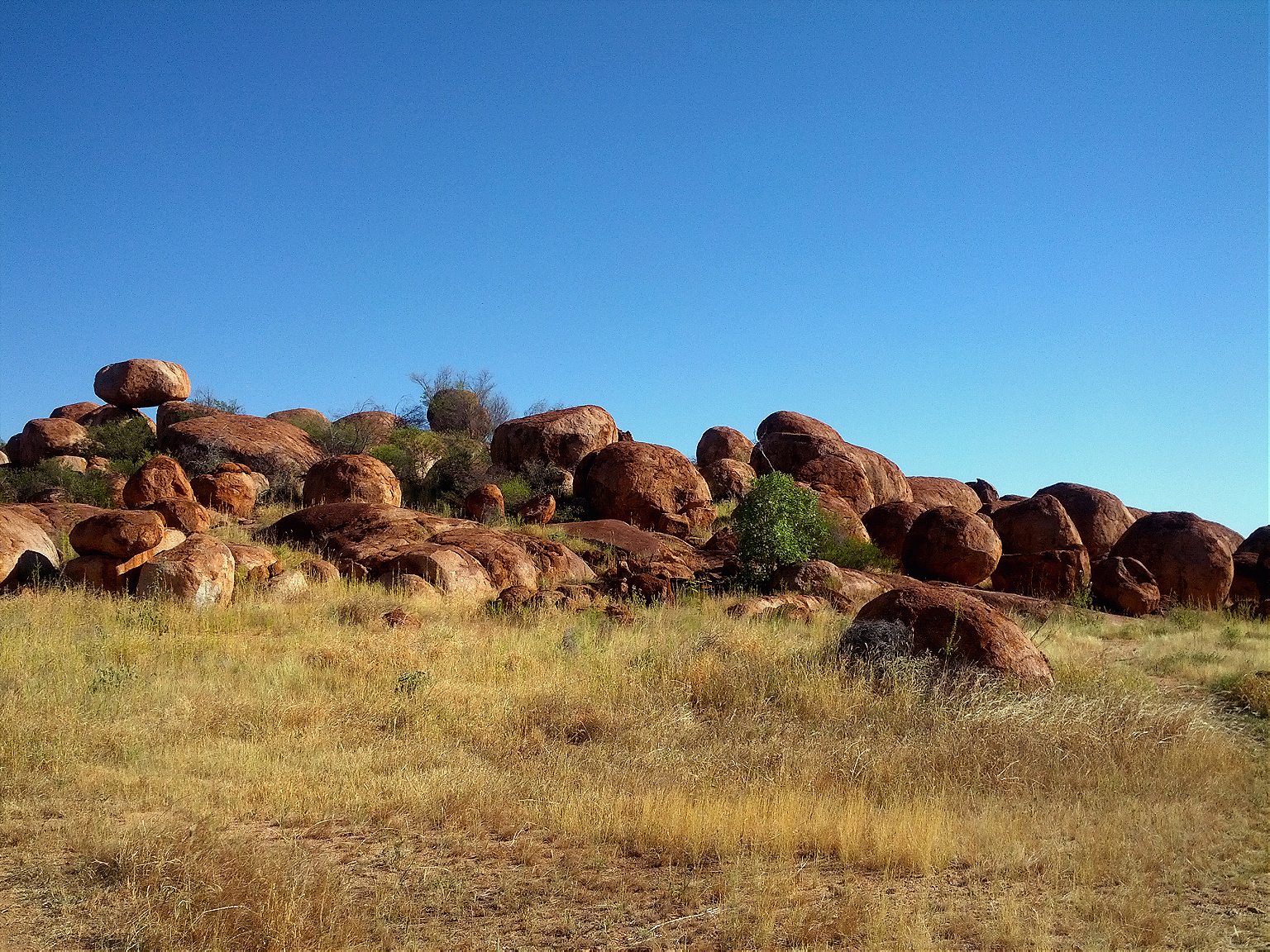
On the morning of March 21 we stop at the Underground Bookstore in Coober Pedy to secure the last of the required permits. The manager tells us of a great sandstorm that swept in just as they were wrapping filming for Mad Max: Beyond Thunderdome. She explains that the filmographer had been flying above the town when the storm struck, capturing the vision that became an iconic part of the film’s end. The bookstore manager then segues into an anecdote about a local frog species that hibernates deep in the ground between the region’s infrequent rainstorms. Scientists, she says, are studying the frog’s biology for use in deep space exploration.
The movie Pitch Black was filmed here, too. The crashed spaceship featured in the film was left behind by the production team and sits increasingly derelict next to a toilet block in the parking lot of the local opal museum.
Mad Max: Fury Road was supposed to be shot just a few hundred miles east of Coober Pedy, at a place called Broken Hill, until sudden heavy rains ruined the movie-worthy desert landscape. Instead, they filmed it in Namibia. But the soul of the franchise lives forever here.
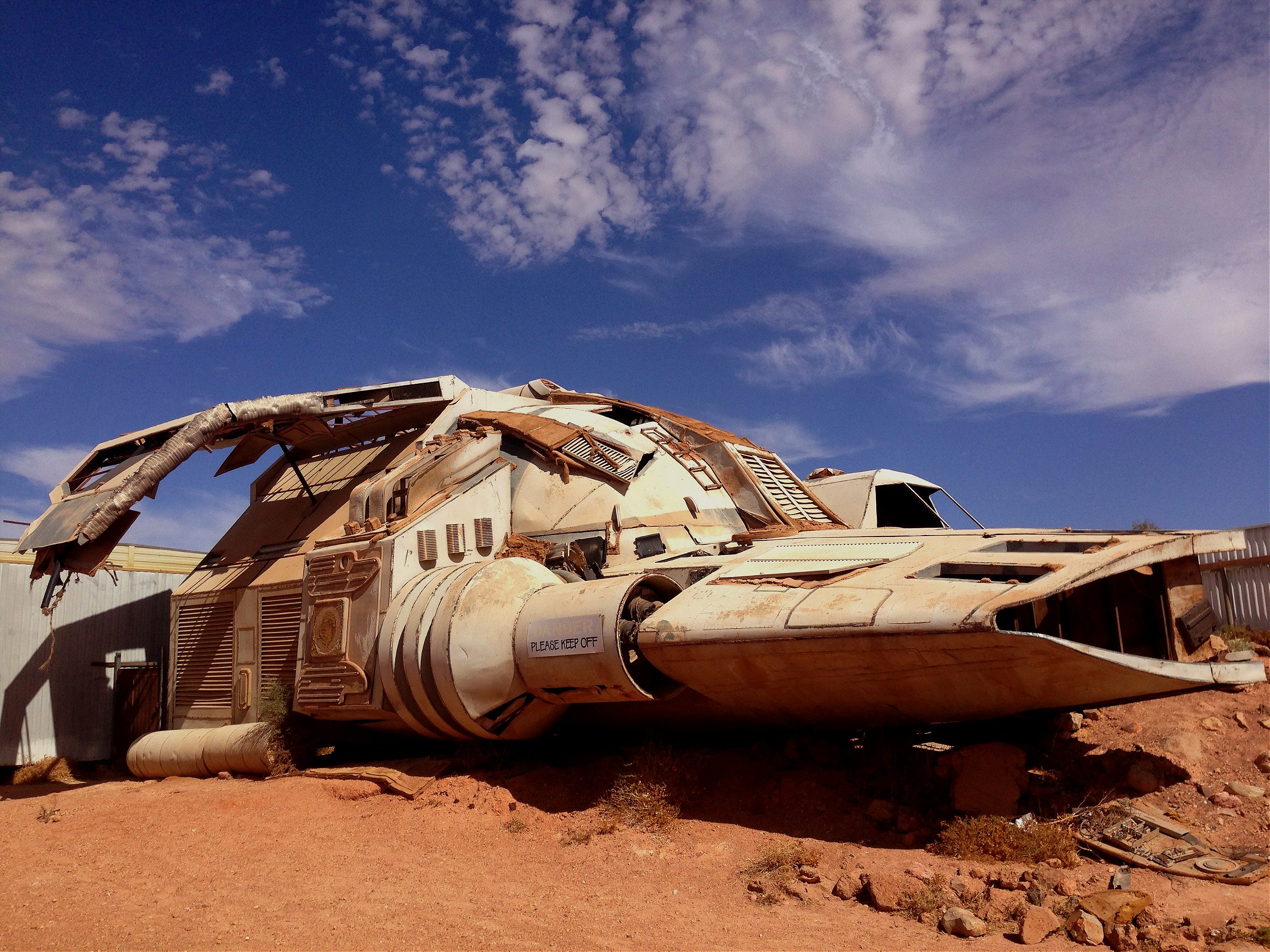
Later that afternoon, we produce a huge dust trail as we race out of town, test-driving the 4WD we’ve just rented. We’re off to inspect the Dingo Fence, a 3,488-mile structure that cuts across Australia’s southeast, separating the native dogs from the country’s sheep stations. We don’t notice until the next day that the fuel gauge is sitting far lower than expected. This truck, even with two extra jerry cans of fuel, will not get us to Emu Fields and back. If we hadn’t noticed and switched vehicles we’d likely end up out in the desert forever, two otherwise well-equipped corpses. Another tale for the locals to tell.
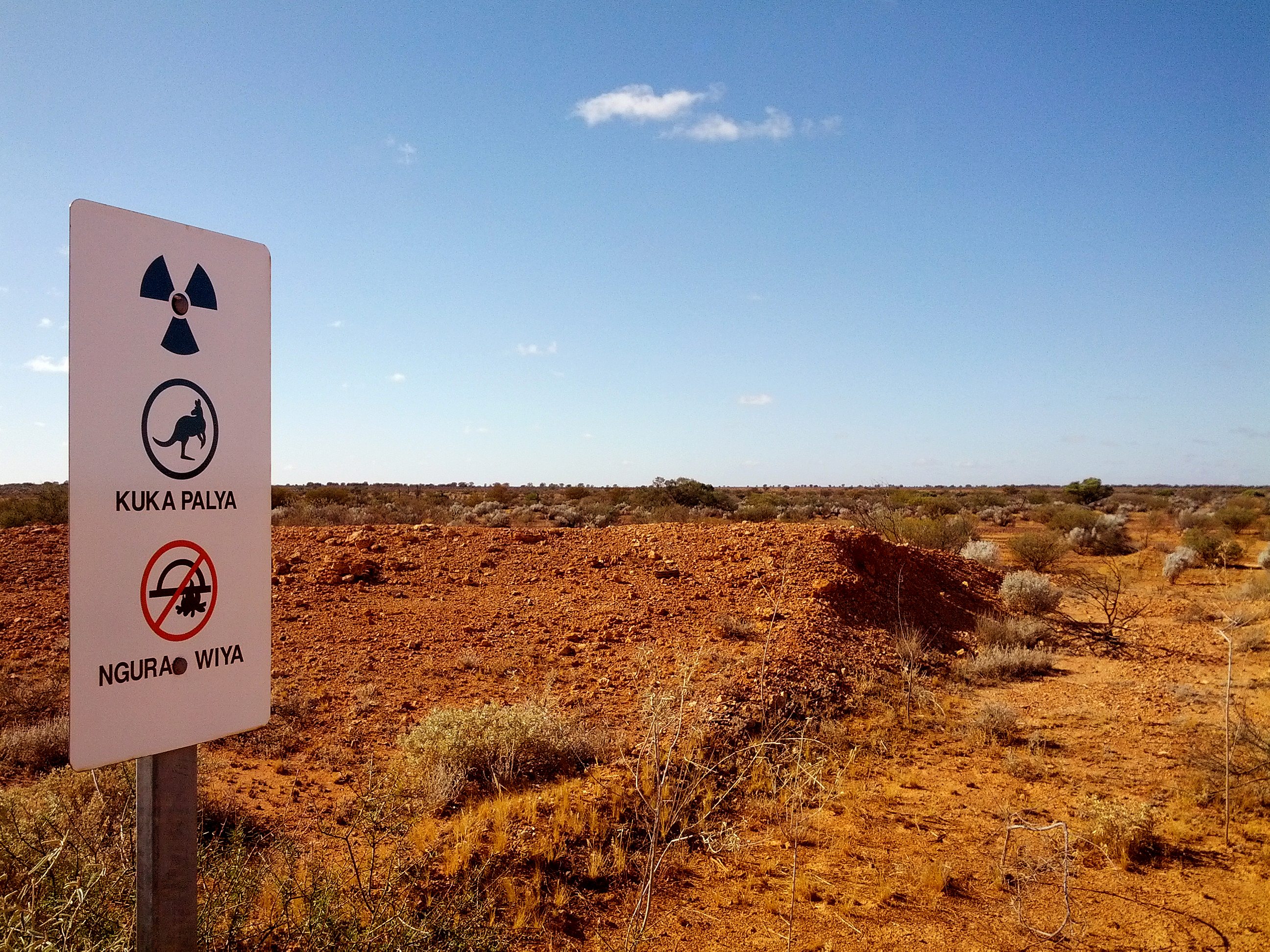
March 23, 2015. Dawn. Kangaroos race along the dingo barrier beside us as the sun rises; the only other mammals we’ll see for the next two days. Wayne points out that there’s clearly no fence built that will keep these animals from moving where they choose.
Len Beadell—famed bushman and surveyor who opened up vast swaths of Australia’s deserts, spiritual predecessor to Mad Max—forged this path with a minimal support crew. He navigated by the stars and used bullets instead of drill bits to make the sign posts that marked the way. These bumpy roads have not been maintained for decades; rough and highly corrugated, they take a toll on the vehicle. At one point we swap out a shredded tire on a stretch of scrubland that once served as a makeshift landing strip for planes delivering atomic cargo. The rusted-out oil drums that refuelled the aircraft still line the edge of the runway.
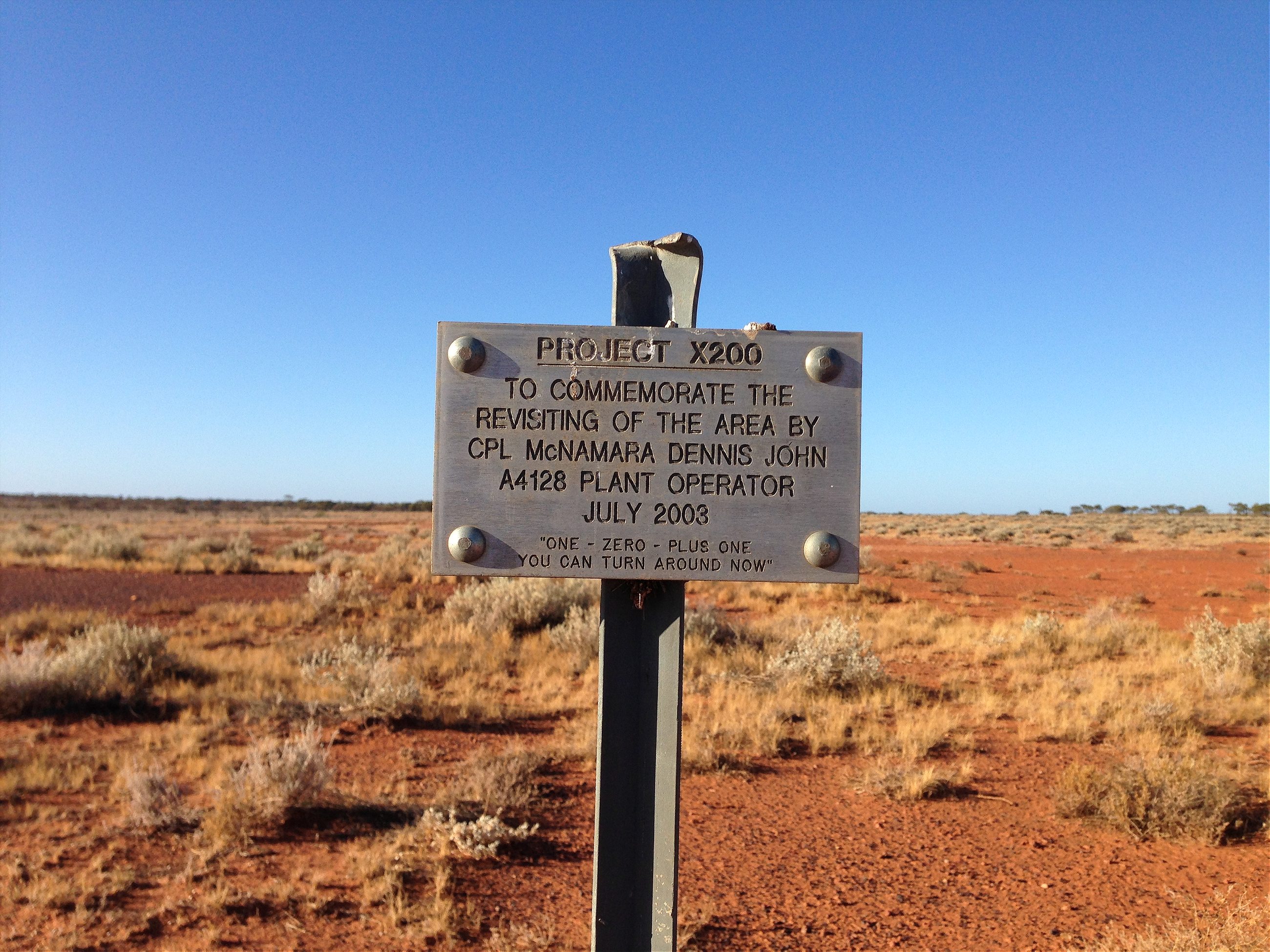
The next day, we arrive at Emu Fields. This is not your regular tourist destination. The signposts are minimal and in disrepair. The GPS puts us mere miles from the atomic testing range. We set up for the night. All we have to help guide us at this stage is a rough trip report written by a previous traveler. When the Trinity test site in New Mexico—where the world’s first recorded atomic explosion took place—had an open day last month, over five thousand people attended. There are no tourist brochures for this place. There is no visitor’s centre.
Down the road we find the scattered relics and remnants of a settlement presumably established by the British Army. Concrete slabs and broken bottles are all that remain of the people that came out to the middle of nowhere to take mastery over the power of the atom for King and Country.
There’s a reason they did their tests out here. It’s just sparse trees and rocky landscape as far as the eye can see. You can almost sense the ghosts of the unwitting test subjects. While the nearby cattle stations were warned in advance, the local Aboriginal population was not. Forty-five indigneous people were caught in the highly radioactive black mist that covered the land for over more than 100 miles from the site of the blast. Over half of them may have died. As one friend commented: “The phrase ‘Nuclear Colonialism’ had never occurred to me prior to now.”
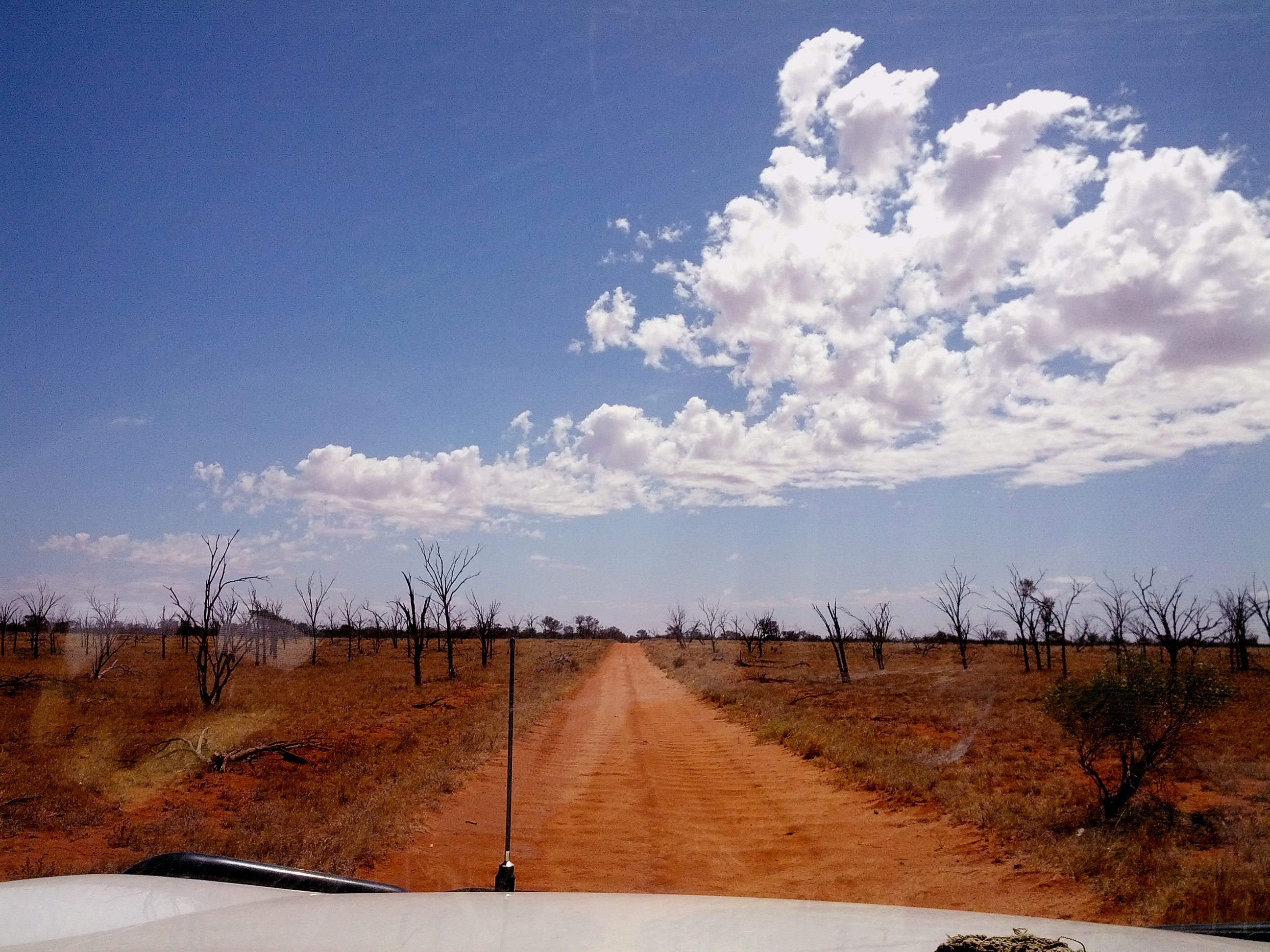
On the morning of March 24 we cross the threshold into the Zone. We’re Stalkers now. The place is marked by the presence of trinitite—a rough glass formed by the heat wave of a nuclear blast acting upon the sand. There are tufts of grass growing out from under the obelisks, next to the torn steel remains of the atomic testing platforms. Nature, it seems, always finds a way.
It’s been over sixty years since Emu Fields was an active nuclear test range. Like Chernobyl, it still acts an exclusion zone. According to the newest signage it’s now safe to hunt kangaroo, which only pass through the area. As for the residents of its many rabbit warrens, they’d best be considered a protected species. Apart from the obelisks marking the detonation points, and the scattered rubble of the structures that held the atomic bombs, there is very little to see inside the Zone.
We wander the site for maybe an hour, no more. It’s long enough. It is the apex of our adventure, the culmination of thousands of miles of driving and months of planning.
Then it’s over. There’s nothing else to absorb here but more radiation.